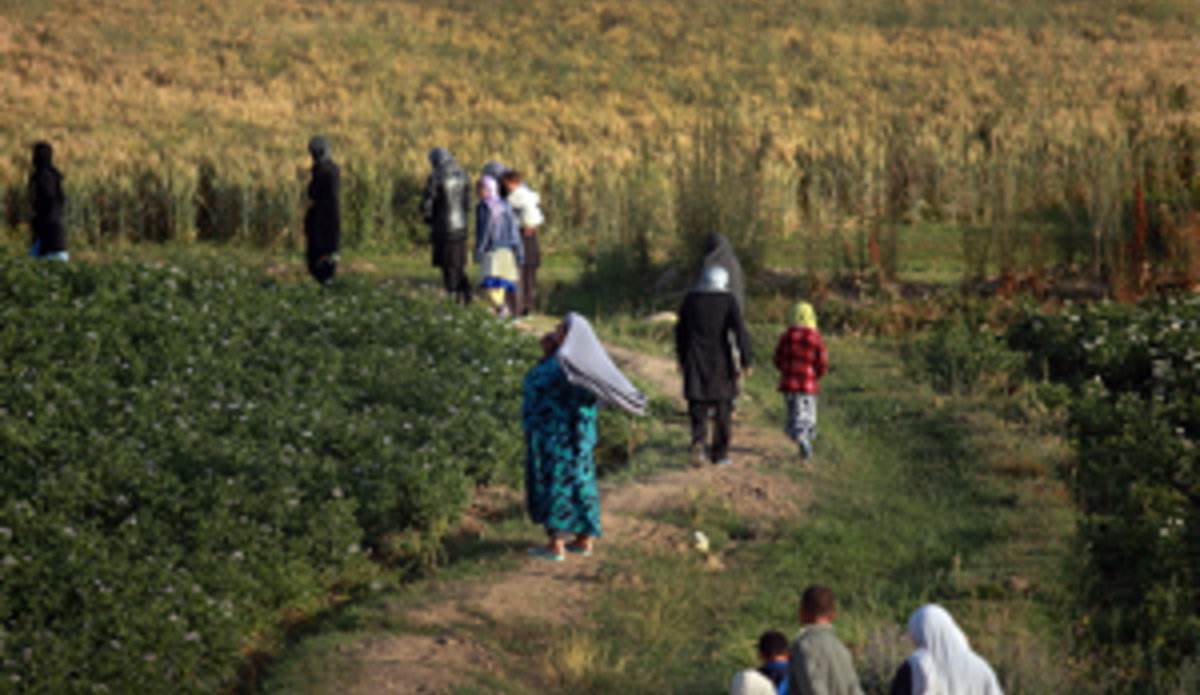UN officials tread the ‘Silk Road’ to Afghan development
1 August 2010 - A week of concerts with Ustad Safdar Tawakuli and other Hazara singers, buzkashi horse matches, theatre performances by youth groups and sales of homespun carpets and honey jars, wrapped up today at the second annual Bamyan Silk Road Festival.
Held in central Afghanistan near the lakes of Band-e-Amir National Park and the city of Bamyan whose sandstone cliffs once guarded the colossal Buddha statues, the festival is meant to encourage tourism and promote cultural heritage in a province considered the most secure but poorest in the country.
“This was an excellent opportunity for all United Nations agencies to come together to enjoy the Bamyan Silk Road Festival, as well as to discuss matters of common interest,” said UN deputy envoy for Afghanistan, Robert Watkins, who led a senior delegation into the central highlands to see first-hand the UN’s impact there and to discuss what more can be done to strengthen programme delivery in the area.
On an experimental plot near a stream where children wash dishes, the Bamyan branch of the Variety and Seed Industry Development Project breeds and sells to farmers nationwide modified seeds of wheat, lentil, chick pea, potato and soy bean.
Despite 80 per cent of Afghans working in agriculture, some 40,000 people starved to death last year, according to a UN Security Council report.
“Improved seeds increase yield by at least 30 per cent. With simultaneous irrigation, improved seed quality and plant protection to fight against diseases and pests, we could achieve food sufficiency for the country,” said Tekie Tekeste, Representative of the UN Food and Agricultural Organization (FAO), which runs the project in partnership with the Ministry of Agriculture, Irrigation and Livestock (MAIL).
“Higher yield of seeds leads to greater disposable income and a higher quality of life,” said Abdul Qadeer Nazri, Quality Control Specialist, standing near a patch of Chanang-Won soy beans.
A former hub on the historic Silk Route, Bamyan lacks access to modern markets. Less than half of the province has roads. Of those, only about half are accessible all year round, according to the Ministry of Rural Rehabilitation and Development.
The shortest road connecting Bamyan and Kabul is 180 km long and takes about eight hours to drive in good weather.
The first 50 metres of asphalt on an alternative two-lane road were laid last month in a ceremony attended by Governor Habiba Sarabi, the only female governor in Afghanistan. The road project is overseen by a Provincial Reconstruction Team (PRT) from New Zealand with support from the Ministries of Rural Rehabilitation and Development and Public Works, the UN Office for Project Services (UNOPS) and the international community.
“In this region, we deliver as one. All the UN teams are one with the local counterparts, the provincial government, the PRT, the international community and the non-government organizations,” said Heran Song, Head of the UN Central Highlands office.
“In the Kabul Process, it is good timing to renew our commitment and to coordinate more on efficient delivery,” said Song, referring to the process of transition to greater Afghan responsibility and ownership in security and civilian areas which began at the London Conference in January and was reaffirmed last month at the Kabul Conference.
At the conference, President Hamid Karzai unveiled a national set of priorities and programmes for improved security, governance, economic growth and better service delivery to citizens, which is being put into action by the Government with support from the UN and the international community.
The delegation to Bamyan included senior representatives from the World Health Organization (WHO), the Office on Drugs and Crime (UNODC), the Industrial Development Organization (UNIDO), the Educational, Scientific and Cultural Organization (UNESCO).
By UNAMA
 UN
UN







